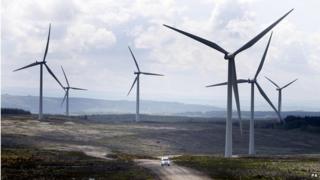ScienceRocks
Democrat all the way!
- Banned
- #1
Europe Offshore Wind Industry Shatters Record
Europe Offshore Wind Industry Shatters Record CleanTechnica
Annual Installed Offshore Wind Capacity in Europe (MW)

Mind blowing!!! Off shore wind is rocking!
Europe Offshore Wind Industry Shatters Record CleanTechnica
Europe’s offshore wind industry has shattered previous installation records in the first half of 2015, installing 2,342.9 megawatts (MW) of electricity generation capacity, triple the same time last year.
The European Wind Energy Association (EWEA) revealed Thursday that installations for the first half of 2015 had reached 2,342.9 MW, tripling the grid-connected capacity of the same period in 2014. This brings Europe’s offshore wind grid-connected capacity up to 10,393.6 MW, across 82 wind farms and 11 countries.
“It has taken the offshore wind industry just six months to set the best year the sector has ever seen in terms of installed capacity,” said Kristian Ruby, Chief Policy Officer, EWEA. “While this clearly shows a commitment to offshore wind development in Europe, a number of completed projects, explosive growth in Germany and the use of higher capacity wind turbines are major contributors to these numbers.”
Annual Installed Offshore Wind Capacity in Europe (MW)

Specifically, 584 wind turbines were connected across the Netherlands, Germany, and the UK, thanks to several projects reaching completion. Add in the use of larger, more powerful wind turbines, and the European offshore wind industry is getting more bang for its buck with each installation completed, with the average size turbine rising from 3.5 MW to 4.2 MW.
Mind blowing!!! Off shore wind is rocking!




